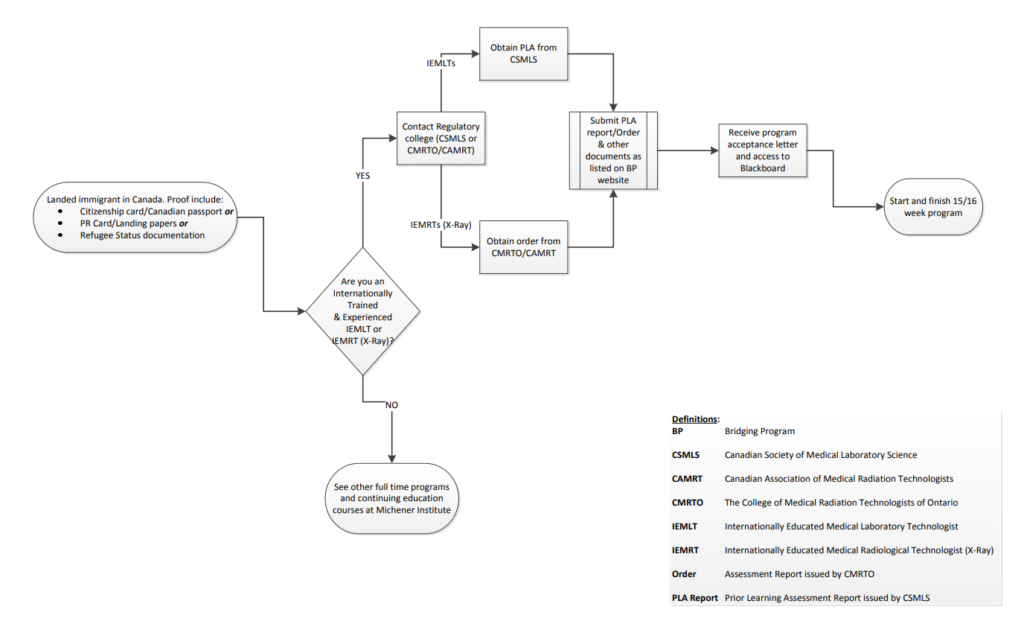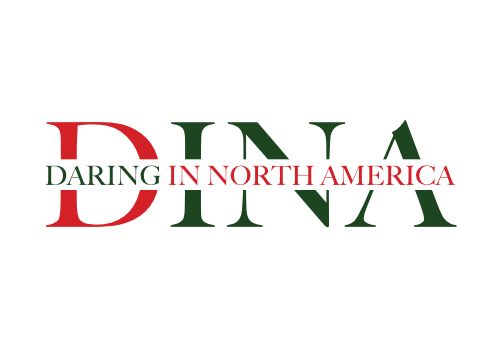
Becoming a registered and practicing Medical Laboratory Technologist (MLT) in Canada is an important goal for internationally trained professionals in the field. The process involves several steps, including a prior learning assessment (PLA) through the Canadian Society of Medical Laboratory Science (CSMLS) and the completion of a bridging program. This blog post outlines the essential steps for internationally trained MLTs to become registered and practice in Canada.
Step 1: Evaluate Your Eligibility The first step is to assess your eligibility for the CSMLS PLA. This evaluation process determines if your education, work experience, and language proficiency are equivalent to Canadian standards. The CSMLS evaluates your academic qualifications, past training, and experience. Additionally, you must meet other requirements such as being a permanent resident, landed immigrant, or Canadian citizen, and having recent work experience as an MLT or a graduate. It is essential to complete the necessary PLA applications and tests.
Step 2: Complete the Prior Learning Assessment (PLA) Once you have been deemed eligible, you can proceed with the PLA. The CSMLS conducts a thorough evaluation of your theoretical and practical education, work experience, and English or French language fluency. Upon completion of the PLA, the CSMLS will issue a PLA report, which is required for further registration processes.
Step 3: Enroll in a Bridging Program To fill any existing learning gaps and prepare for the CSMLS General MLT certification exam, internationally trained MLTs are encouraged to enroll in a bridging program. One such program is offered by Anderson College. Their Bridging Program for Internationally Trained Medical Laboratory Technologists provides hands-on training in various medical lab procedures, including specimen collection and handling, infection prevention and control, analytical techniques, clinical microbiology, immunology, hematology, histotechnology, and more. The program also offers practice competency-based exams to prepare for the national CSMLS certification exam.
Step 4: Attend Virtual Orientation and Open House Upon acceptance into the bridging program, students are required to attend a virtual orientation to the IEMLT Bridging Program. This orientation provides important information about the program structure, curriculum, and expectations. It is an opportunity to clarify any queries and understand the resources available to support students throughout their journey.
Step 5: Complete Bridging Program Curriculum During the bridging program, students will undergo comprehensive training in the relevant subjects. The curriculum may include courses such as Specimen Collection and Handling, Infection Prevention and Control, Analytical Techniques, Clinical Microbiology, Immunology, Hematology, Histotechnology, MLT Quality Management, Transfusion Medicine, and more. The small class sizes at Anderson College allow for personalized attention and support from instructors, facilitating a conducive learning environment.
Step 6: Practice and Prepare for Exams In the final term of the bridging program, students will have the opportunity to practice their skills in a fully equipped medical lab and write practice competency-based exams. These exams are designed to simulate the challenges faced in the CSMLS certification exam. By gaining hands-on experience and participating in exam preparation activities, students can enhance their knowledge and boost their confidence for the national certification exam.
Step 7: Apply for CSMLS Certification and CMLTO Registration Once students successfully complete the bridging program and pass the CSMLS certification exam, they become eligible to apply for a practicing certificate of registration from the Canadian Medical Laboratory Technologists of Ontario (CMLTO). It is important to note that CSMLS examinations are offered in February, June, and October each year, and applicants must apply at least three months ahead of the desired examination date.
Becoming a registered and practicing Medical Laboratory Technologist in Canada is an achievable goal for internationally trained professionals. By following the steps outlined above, including evaluating eligibility, completing the PLA, enrolling in a bridging program, and passing the CSMLS certification exam, aspiring MLTs can gain the necessary qualifications to practice in Canada. Programs like the one offered by Anderson College provide the essential training and support to help internationally trained MLTs fill learning gaps and succeed in their career transition.
For more information, book a consultation with us. You can also find this information on our YouTube channel Daring In North America.
